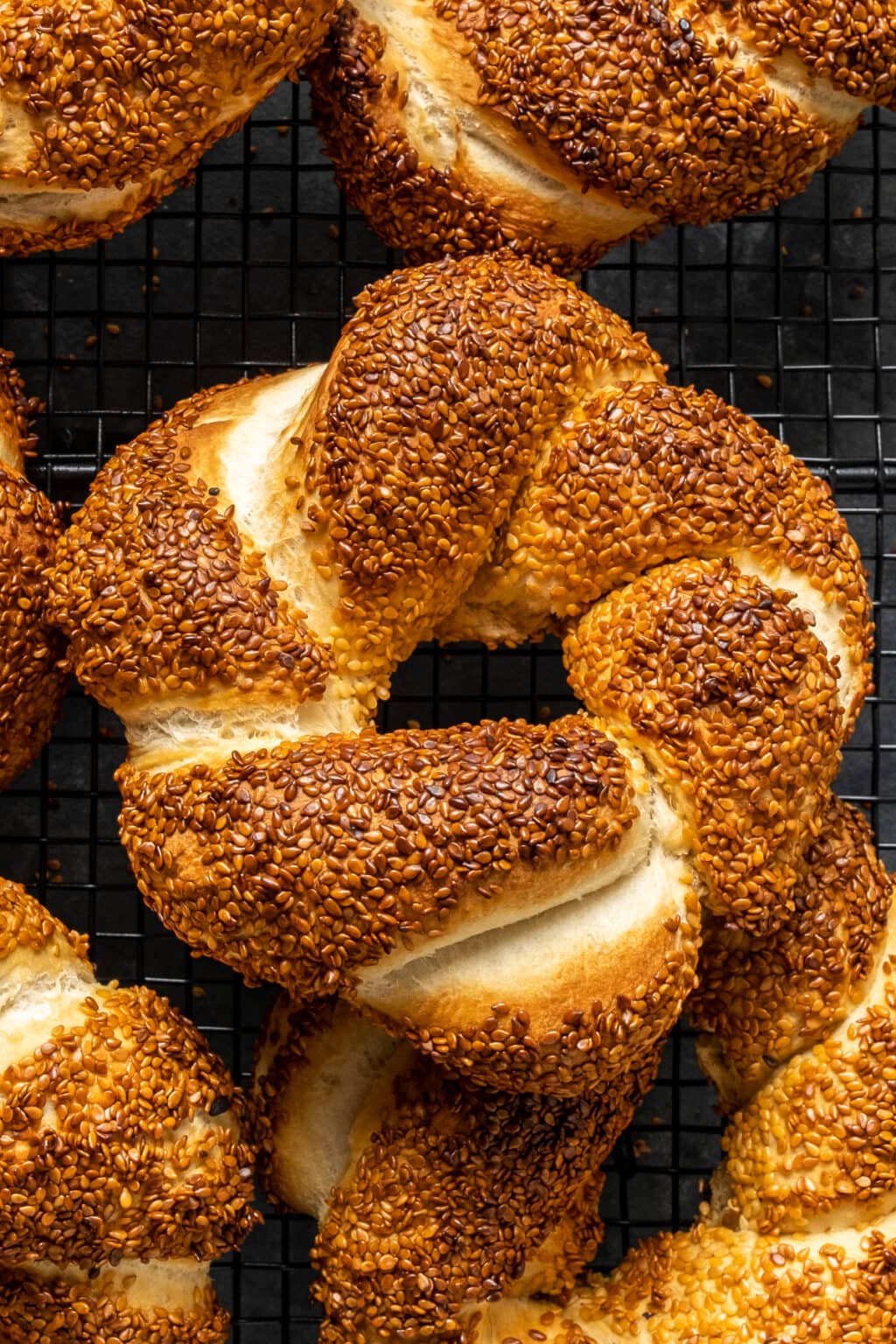Turkish Simit Recipe
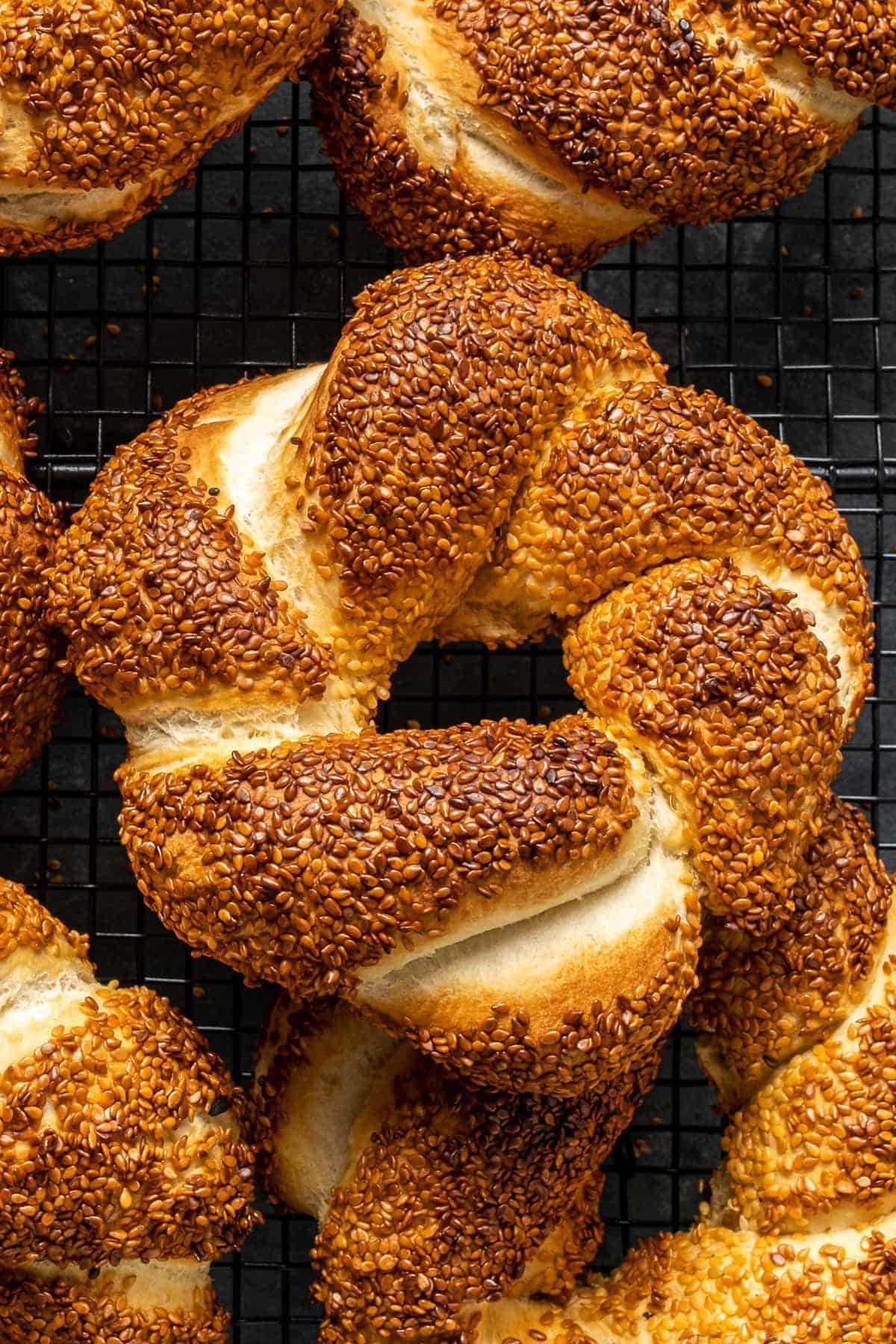
Ingredients
You need a simple dough and a sweet nutty coating for a tasty simit recipe. Here is a breakdown of the ingredients needed:
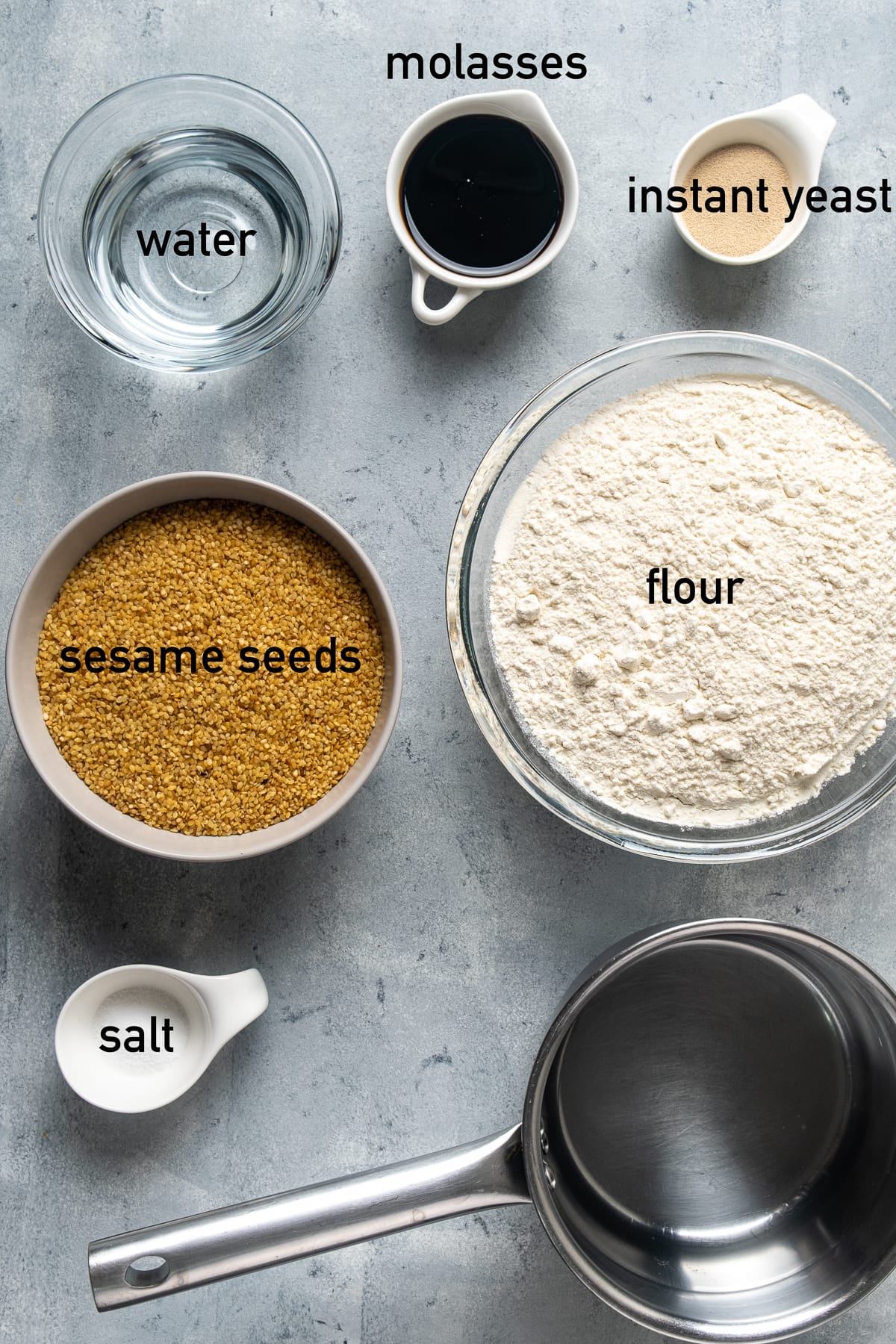
For the Dough:
- Flour: The type of flour you choose can affect the texture of your simit. All-purpose flour is commonly used in this recipe, but you could also use bread flour for a chewier texture. The amount of protein in flour is important to have the right flavor in simit, it should be 13 or more.
- Dry Instant Yeast: It’s designed to be mixed directly into dry ingredients without needing to be dissolved in water first. This yeast becomes active more quickly, and it allows dough to rise faster compared to other yeast types. If you prefer using active dry yeast, on the other hand, you should dissolve it in warm water (usually about 110-115°F or 43-46°C) before adding it to the rest of the ingredients.
- Salt: Salt enhances the flavor of the simit and strengthens the gluten structure of the dough, leading to a better texture.
- Lukewarm Water: Water is needed to combine the dry ingredients into a dough, and the warmth helps to activate the yeast.
For the Coating:
- Molasses: This is used to stick the sesame seeds onto the simit. It also imparts a slightly sweet, complex flavor. Try to find grape or date molasses. Read our note below to learn more about the molasses used in simit recipes.
- Water: This is used to thin the molasses a bit, making it easier to coat the simit.
- Flour: A little flour is added to the molasses mixture to create a thicker coating that adheres better to the dough. There isn’t really a good substitute for this.
- Toasted Sesame Seeds: These are what give the simit its distinctive appearance and flavor. Toasting the seeds beforehand enhances their flavor. If you can’t find them toasted, you can toast sesame seeds in a large non-stick pan over medium heat until golden. Make sure to stir constantly. It should take about 20 minutes.
Step-By-Step Instructions
Here’s a step-by-step guide to making traditional Turkish simit:
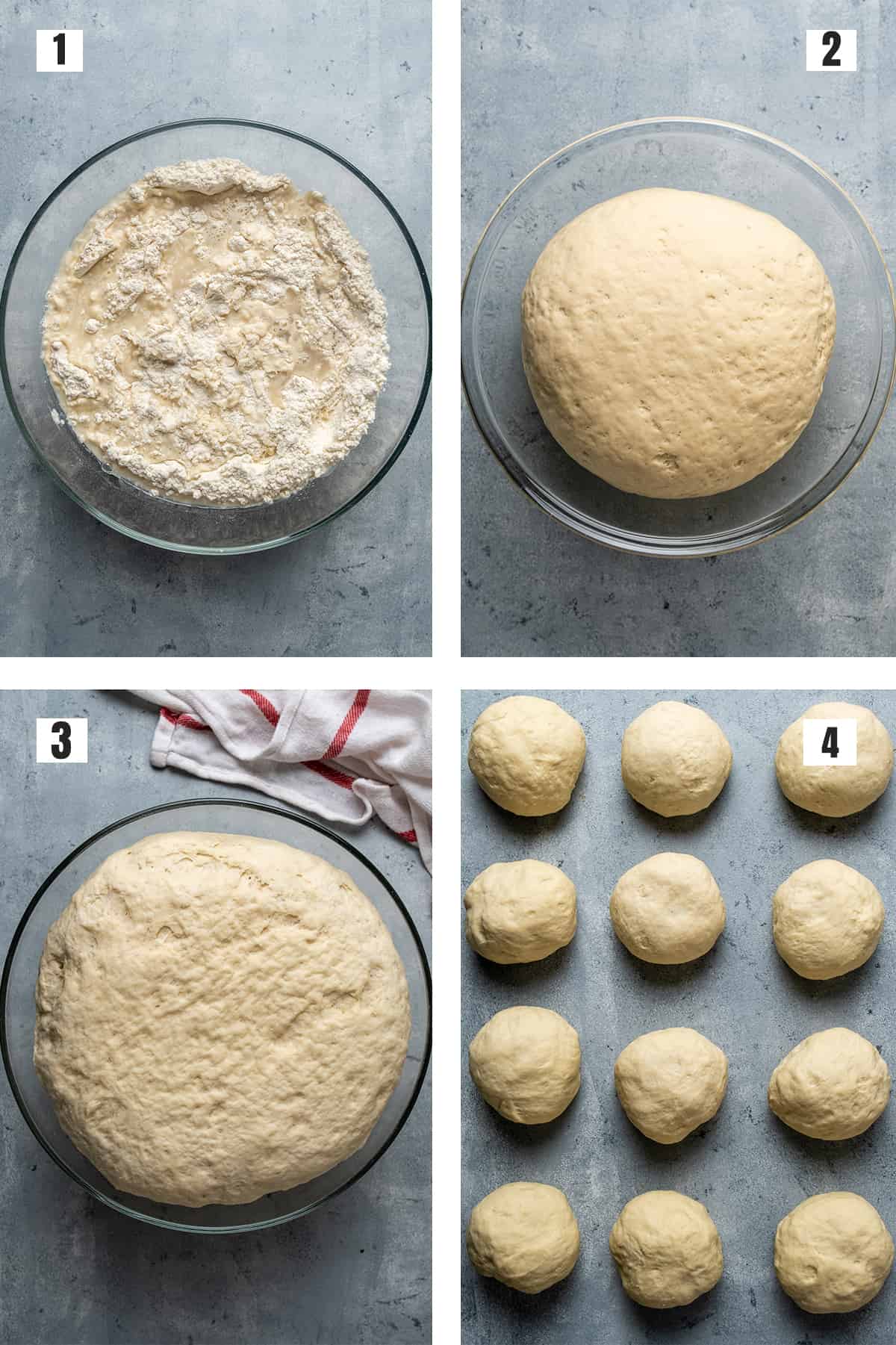
Making the Dough:
- Start by whisking together the flour, yeast, and salt in a large mixing bowl.
- Gradually add in the warm water, mixing with your hand as you go. Continue to knead the mixture for about 5 minutes, until it forms a smooth, elastic, and non-sticky dough.
- If you have a stand mixer with a dough hook, you can also use it for this step to save some effort.
- Cover the bowl with a clean kitchen towel and leave the dough to rise in a warm place. This should take about 1 hour, and the dough should roughly double in size.
Preparing the Coating:
- While the dough is rising, prepare the coating. In a medium-sized bowl, whisk together the molasses, water, and flour until well combined. Set this aside for later use.
- Put the sesame seeds in another separate bowl. If the sesame seeds are raw, make sure to toast them lightly in a dry pan beforehand to bring out their flavor. Set this bowl aside as well.
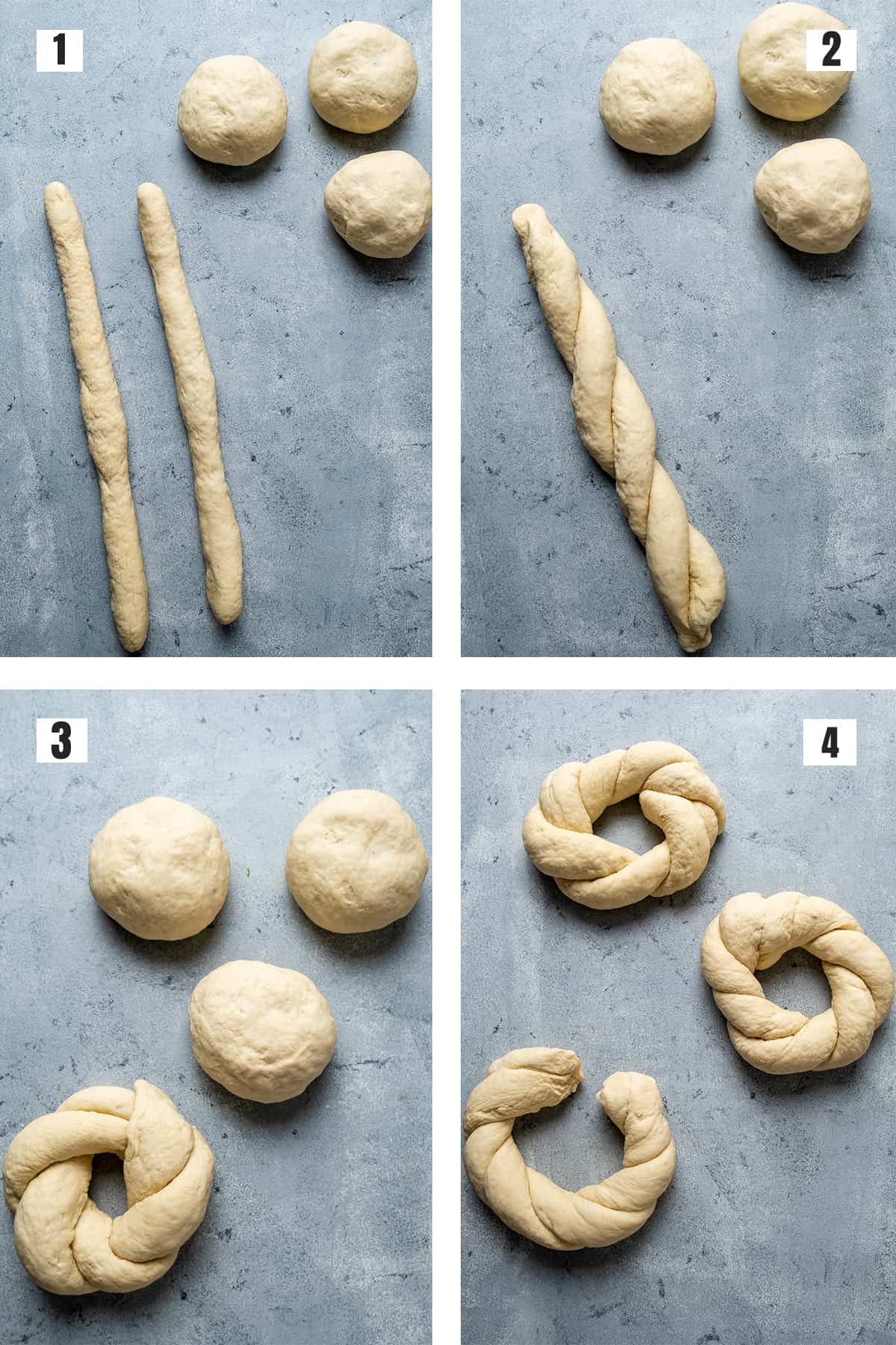
Shaping the Simit Dough:
- Once the dough has doubled in size, punch it down to release the gas. Transfer the dough onto a floured surface.
- Shape the dough into a log and cut it into 6 equal pieces. Then cut each of these pieces in half, giving you a total of 12 pieces.
- Take two pieces of dough and roll them out into ropes, each about 20 inches (50 cm) long.
- Lay these two ropes side by side, and pinch the ends together to secure them.
- Twist the two ropes in opposite directions to create a braided effect.
- Once the ropes are fully twisted, connect the two ends by pinching them together to form a ring shape. This is your basic simit shape.
- Repeat this process with the remaining dough pieces.
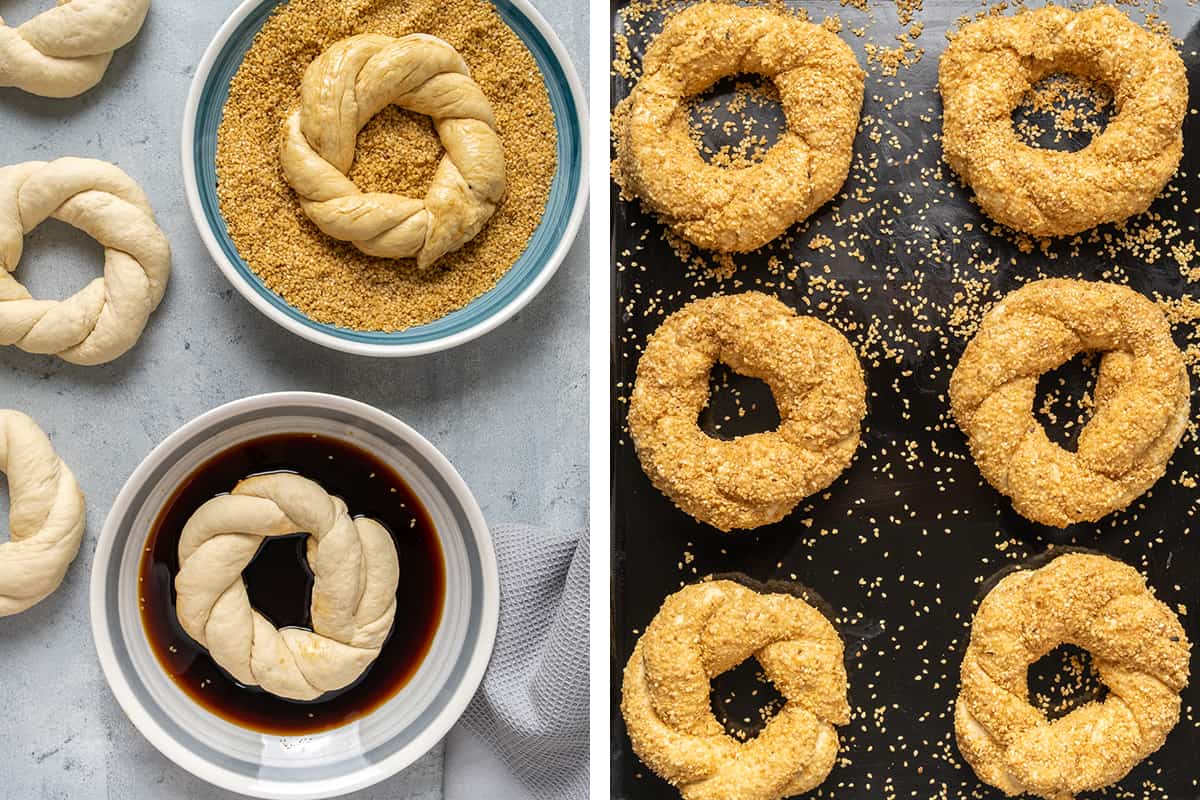
Coating the Simit Dough and Baking:
- Preheat your oven to 220°C (425°F). Line a baking sheet with parchment paper.
- One by one, soak each simit ring in the molasses mixture, making sure it’s fully coated. Then, transfer it to the bowl of sesame seeds and turn it to cover all sides.
- After coating, place each simit on the lined baking sheet.
- Bake the simits in the preheated oven for 15-20 minutes, or until they turn a beautiful golden brown color. Keep an eye on them to avoid over-browning.
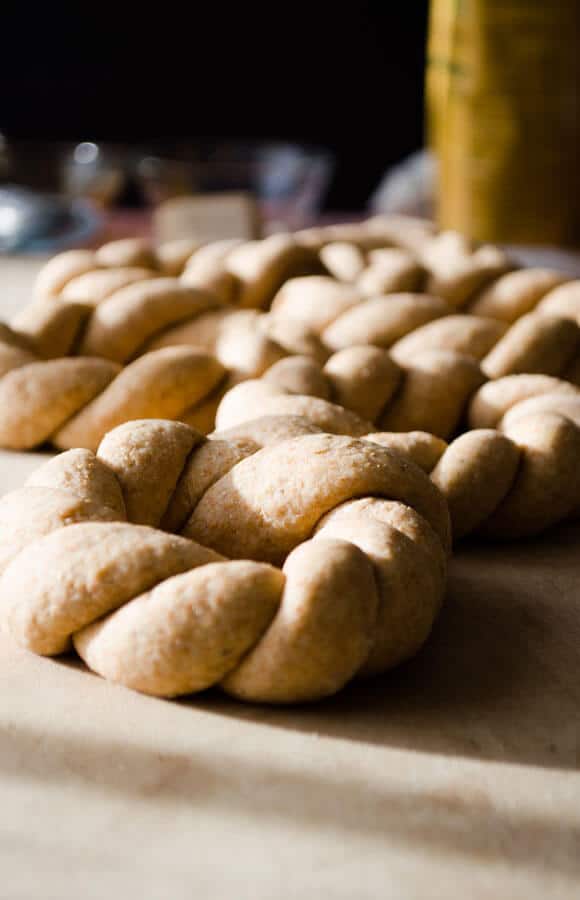
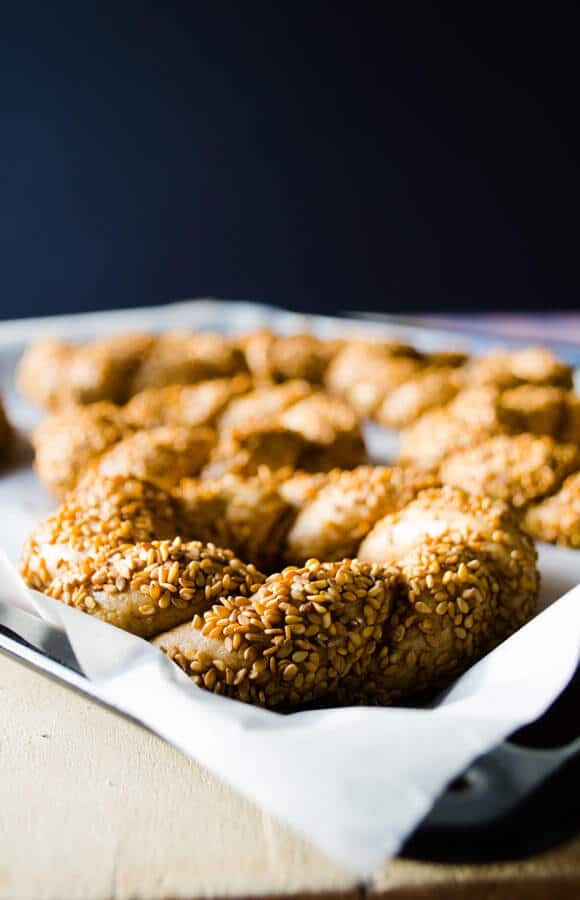
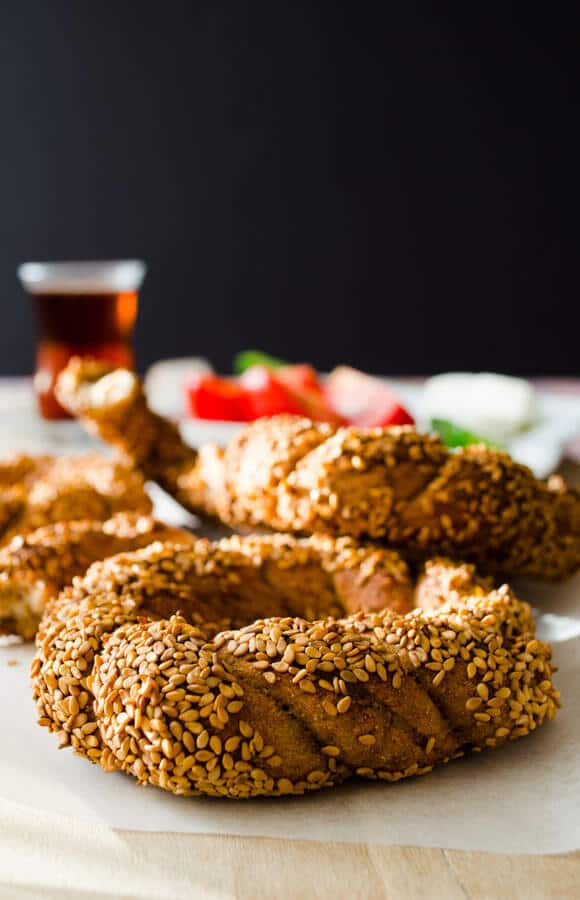
Note: You can use whole wheat flour in this simit recipe as we have done before. Please see the images below. They turn out a bit harder and crunchier but still tastes good.
Tips & Tricks
- Use toasted sesame seeds for a good simit taste. If you can’t find them toasted at the market, toast them yourself beforehand. To do this, heat a non-stick pan and toast the sesame seeds by stirring occasionally until light brown and you feel that nutty flavor.
- In the coating mixture, don’t leave the flour out. It gives a consistency and helps the mixture stick on the dough ring.
- For a crunchier result, just like we do when baking bread, spray some water into the oven right after you put the prepared dough rings in the oven.
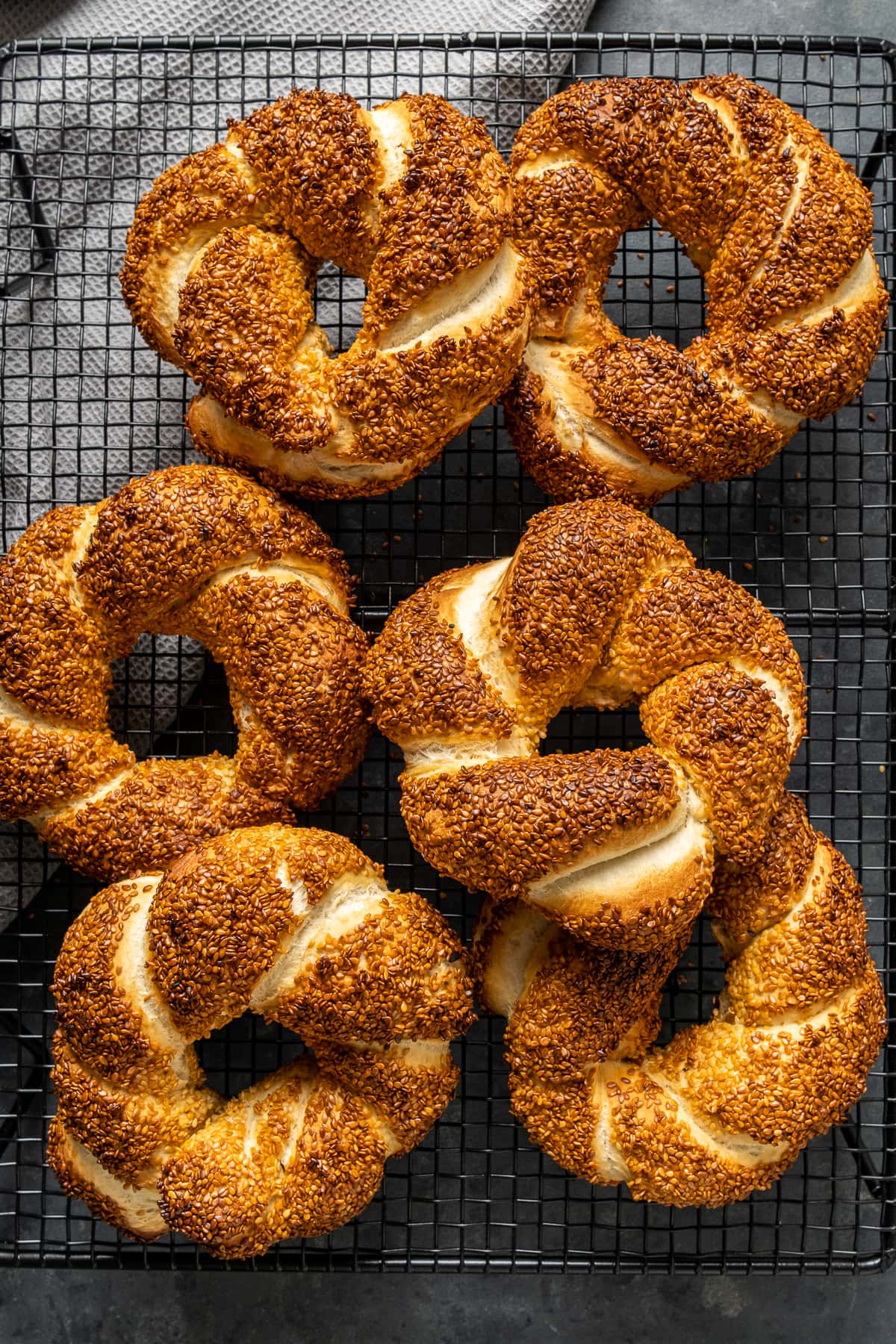
Storing & Reheating
Storing:
Freshly baked simit can be kept at room temperature for up to two days. Wrap them in a clean cloth or store them in a bread box to keep them from drying out.
For longer storage, they can be stored in the refrigerator. Place them in a plastic bag or wrap them in plastic wrap to prevent them from absorbing other flavors in the fridge. They can last for about a week this way.
For the longest shelf life, simits can be frozen. Wrap each individually in plastic wrap and then place them in a freezer-safe bag. They can last up to three months in the freezer.
Reheating:
When you’re ready to eat your stored simit, it’s best to reheat them to recreate the fresh-out-of-the-oven experience. Here’s how:
Preheat your oven to 150°C (300°F). Place the simit directly on the oven rack and heat for about 5-10 minutes, or until warm and slightly crispy.
If the simit is frozen, there’s no need to thaw it first. Just extend the reheating time to about 15-20 minutes.
Alternatively, you can reheat them in a non-stick skillet over medium heat.
Ingredients
For the Dough:
-
- 500g (3 + ¼ cup) flour
- 2 teaspoon dry instant yeast
- 1 teaspoon salt
- 300ml warm water
For The Coating:
-
½ cup molasses (grape or date)
-
¼ cup water
-
1 tablespoon flour
-
300g (about 1 and ½ cups) toasted sesame seeds
Instructions
Make the dough:
- In a large mixing bowl, whisk together the flour, yeast and salt.
- Gradually pour in the water and mix it with your hand. Knead it for 5 minutes or until you get a smooth and non-sticky, elastic dough.
- Alternatively, you can use a stand mixer with a dough hook for this step.
- Cover it and let it rise for about 1 hour, until it doubles in size.
Prepare the coating:
-
- In a medium sized bowl, whisk together the molasses, water and flour. Set it aside.
- Put the sesame seeds in another bowl. Put it aside. If the sesame seeds are raw, toast them in a pan beforehand.
Shape the simit dough:
- When the dough doubles in size after 1 hour, punch it down and transfer on a floured surface. Shape it into a log and cut it into 6 equal pieces. And then cut each piece into two. You will have 12 pieces in total.
- Grab two pieces and roll them into a rope, 20 inches/50cm in length.
- Put these side by side and stick the ends by pinching.
- Twist in opposite directions to make a braid.
- Combine the two ends by pinching them together and make a ring.
- Repeat this for the remaining dough balls.
Coat the simit dough and bake:
- Preheat the oven at 425C/220C. Line a baking sheet with parchment paper and put it aside.
- Soak the simit ring into the molasses mixture first and then put it into the sesame seed bowl. Transfer onto a parchment paper lined baking sheet and bake for 15-20 minutes, until golden.
Notes
-
- The amount of protein in flour is important to have the right flavor in simit, it must be 13 or more. We searched for the right flour at the market, but it wasn’t very easy, so we had to visit a few markets and finally found one with 14. Check out its label before buying!
- Use toasted sesame seeds for a good simit taste. If you can’t find them toasted at the market, toast them yourself beforehand. To do this, heat a non-stick pan and toast the sesame seeds by stirring occasionally until light brown and you feel that nutty flavor.
- In the coating mixture, don’t leave the flour out. It gives a consistency and helps the mixture stick on the dough ring.For a crunchier result, just like we do when baking bread, spray some water into the oven right after you put the prepared dough rings in the oven.
Nutrition
- Serving Size:
- Calories: 680
- Sugar: 21.4 g
- Sodium: 465.4 mg
- Fat: 25.8 g
- Carbohydrates: 97.8 g
- Protein: 18.1 g
- Cholesterol: 0 mg

